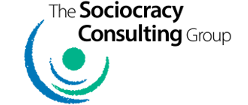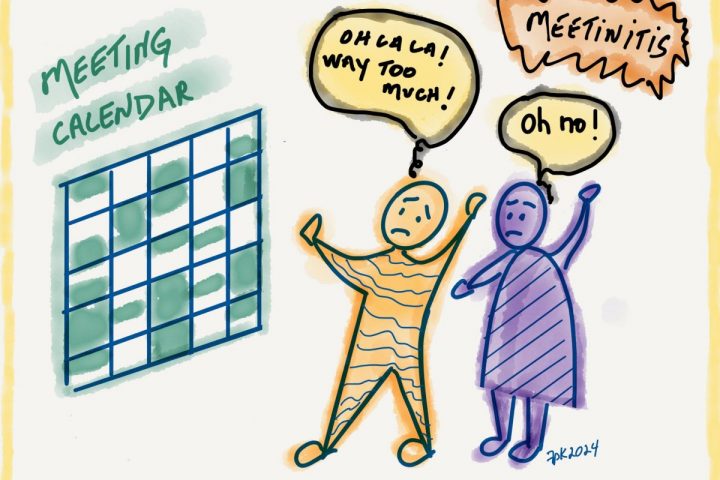 Power-with is a mode of operating in deep collaboration, central to the Sociocratic Circle-organization Method (SCM). Should you be familiar with the gracious and effective momentum of the SCM, you will understand the natural intelligence embedded in its power-with approach.
Power-with is a mode of operating in deep collaboration, central to the Sociocratic Circle-organization Method (SCM). Should you be familiar with the gracious and effective momentum of the SCM, you will understand the natural intelligence embedded in its power-with approach.
Here we explore what power-with is, and why it is so powerful to organizations in actualizing their impactful visions.
Three types of power
In her 1990 book ‘Truth or Dare: Encounters with Power, Authority and Mystery’ (Harper Collins, 1990), Starhawk outlines three types of power in groups and organizations. She describes power-with as “social power, the influence we wield among equals”.
It’s useful to acknowledge the other two types of power described in this book, for context.
Power-over is linked to domination and control, stemming from a mechanistic worldview. The members of a power-over system are valued not for what they are intrinsically, but according to an external measure. Starhawk describes: “Power-over enables one individual or group to make the decisions that affect others, and to enforce control.” Potentially a workable option if and when the authority has the collective good guiding its decisions; and a strong ability to consider the health of the whole system. Too often though, power-over is an approach that can’t do true justice to the complexity of the system.
Power-from-within is described as “the mysteries that awaken our deepest abilities and potential”. Starhawk links this to a personal sense of empowerment to act, create and develop mastery. This is the power we know as individuals with a strong sense of agency, i.e. empowered choice. This is an important muscle to develop, though it can be combative and counter-productive if not cohesive with the other individuals within the system.
Power-with is a vital approach for power sharing within and between groups. Starhawk further describes this as “the power of a strong individual in a group of equals, the power not to command, but to suggest and be listened to, to begin something and see it happen.” Power-with is the binding agent of productive and empowered collectives – where members understand the role they and others carry in contributing constructively toward the greater whole.
If you have experience with distributed leadership models like the SCM, you know first-hand the innate power-with engagement of collective intelligence and wisdom that occurs. This is the spirit of power-with, helping organizations evolve beyond the classic notions of organizational authority automatically leading with power-over.
Power-with at play
In the SCM, power-with delegates domain-specific authority to those with expertise in that particular area or field (held within the unit of the ‘circle’). Instead of the ‘boss’, sitting in their lofty office floors away, determining the next steps of the productive team navigating numerous moving parts, process design and decision-making is held by those with the on-the-ground knowledge.
Team members use patterns of power-with process for guiding their decision-making. These self-corrective and responsive processes adhere to and tie in with organizational norms centering around effectiveness, equivalence and transparency.
Power-with distributes authority from a minority (e.g. ’the boss’ as the classic enforcer of control) to the organizational ‘body’ i.e. it’s collective of members. A team carries responsibility for achieving their specific aims and objectives. The team members are equally responsible for responding to outcomes and consequences of their decisions and actions. They share a diversity of perspectives and skills in contributing to collectively shared decisions.
For example, an administrative team uses the consent decision-making process to determine how they will store company records. The team solicits clarifying questions and reactions via ‘rounds’ to gather responses and information for a proposed policy on how to store the company records. They eventually determine the forward path which they all deem “good enough for now and safe enough to try”. All of them act together as ‘sensors’ in how this policy aligns with their circle aims so that they contribute adequately and adaptively to the organizational mission – to which other teams are similarly contributing.
Another example is the phrase “knowledge is power”. The SCM’s core value of transparency is at play when information access is available to all members of the organization. Meetings are documented clearly, methodically, and in summary, providing reference points for self-correction and adaptation down the line. Equally, the simple act of using rounds to hear what every circle member needs to know and has to say about a policy proposal allows an ‘ecology of voices’ to access knowledge and information from within the living system. This generates understanding and trust among team members as they provide leadership through the power-with consent-based boundaries within which they agree to work.
Implementing power-with design and processes in a collective scenario – such as what the SCM provides organizations – activates a living intelligence similarly experienced in the natural world. This is one that moves beyond the rigid constructs of domination and control towards being truly adaptive, responsive and effective through deep power-with collaboration.
–
[1] Starhawk (1990), ‘Truth or Dare: Encounters with Power, Authority and Mystery’. Harper Collins, New York.
. . .
 Erin Young liberates creative leaders from overwhelm and distraction, using nature-inspired principles to create balance, creativity and collaboration. She does so as a sociocracy consultant with The Sociocracy Consulting Group, and as a Human Potential life and leadership coach. Erin lives on the Sunshine Coast, Queensland, Australia. Learn more about her work at www.erinyoung.net.
Erin Young liberates creative leaders from overwhelm and distraction, using nature-inspired principles to create balance, creativity and collaboration. She does so as a sociocracy consultant with The Sociocracy Consulting Group, and as a Human Potential life and leadership coach. Erin lives on the Sunshine Coast, Queensland, Australia. Learn more about her work at www.erinyoung.net.




